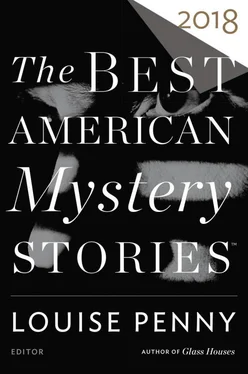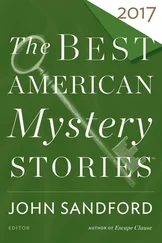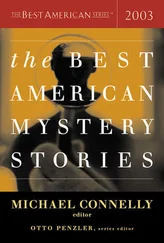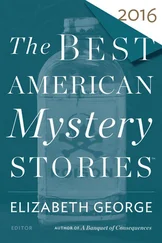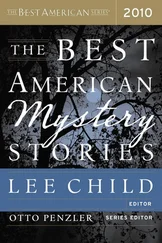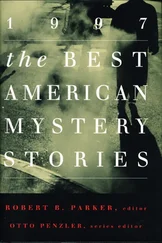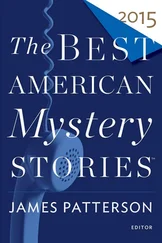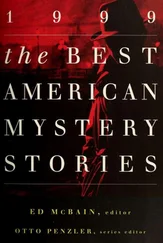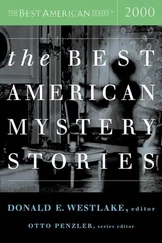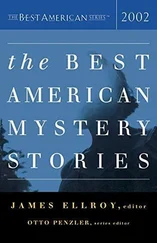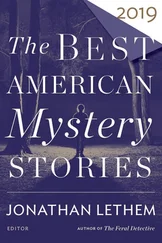Майкл Коннелли - The Best American Mystery Stories 2018
Здесь есть возможность читать онлайн «Майкл Коннелли - The Best American Mystery Stories 2018» весь текст электронной книги совершенно бесплатно (целиком полную версию без сокращений). В некоторых случаях можно слушать аудио, скачать через торрент в формате fb2 и присутствует краткое содержание. Город: New York, Год выпуска: 2018, ISBN: 2018, Издательство: Mariner Books, Жанр: Детектив, на английском языке. Описание произведения, (предисловие) а так же отзывы посетителей доступны на портале библиотеки ЛибКат.
- Название:The Best American Mystery Stories 2018
- Автор:
- Издательство:Mariner Books
- Жанр:
- Год:2018
- Город:New York
- ISBN:978-0-544-94909-6
- Рейтинг книги:4 / 5. Голосов: 1
-
Избранное:Добавить в избранное
- Отзывы:
-
Ваша оценка:
- 80
- 1
- 2
- 3
- 4
- 5
The Best American Mystery Stories 2018: краткое содержание, описание и аннотация
Предлагаем к чтению аннотацию, описание, краткое содержание или предисловие (зависит от того, что написал сам автор книги «The Best American Mystery Stories 2018»). Если вы не нашли необходимую информацию о книге — напишите в комментариях, мы постараемся отыскать её.
The Best American Mystery Stories 2018 — читать онлайн бесплатно полную книгу (весь текст) целиком
Ниже представлен текст книги, разбитый по страницам. Система сохранения места последней прочитанной страницы, позволяет с удобством читать онлайн бесплатно книгу «The Best American Mystery Stories 2018», без необходимости каждый раз заново искать на чём Вы остановились. Поставьте закладку, и сможете в любой момент перейти на страницу, на которой закончили чтение.
Интервал:
Закладка:
Which begat the question, how many double-crosses and switchbacks could I shoehorn into one story without things getting ridiculous?
(FYI, nine double-crosses is too many.)
William Dylan Powellis an award-winning author who writes funny and sometimes dark crime stories set in Texas. Powell’s short fiction has been featured in Ellery Queen Mystery Magazine, Alfred Hitchcock Mystery Magazine, and other publications. He’s also the author of Untimely Demise: A Miscellany of Murder. He lives in Houston.
• I’ve always been fascinated with the intersection of nature and urban living—which can seem so fundamentally unnatural. When I first heard about the one hundred–plus vehicles submerged in the murky water of Houston’s bayous, I couldn’t help but wonder about the story behind each. At the same time, cheap oil was eviscerating the energy-based Houston economy, which had for the most part shrugged at the downturn felt by the rest of the country. I wanted to write a story bringing these two very Houston phenomena together.
Texas EquuSearch, a volunteer force that helps find missing persons via horseback, initially discovered the vehicles while using sonar equipment in the course of their work. After “The Apex Predator” was published (though not because of it), the Harris County Flood Control District, together with the City of Houston and Harris County Precinct 2 commissioner Jack Morman, initiated the Submerged Vehicle Recovery Project.
Working in phases, the project removed more than seventy vehicles from Houston bayous. Most of the vehicles had been stolen, one during an aggravated robbery and another during a home invasion. Seventeen were too deteriorated for identification, and many simply fell apart. Unlike in my story, nothing of investigative interest was found in any of the vehicles. The project was completed in mid-August 2017. Hurricane Harvey hit on August 29, 2017.
Scott Loring Sandersis the author of two novels, a short story collection, and an essay collection called Surviving Jersey: Danger & Insanity in the Garden State. A previous story of his appeared in The Best American Mystery Stories 2014, and he’s also had work noted in The Best American Essays 2015. The piece selected for this year’s anthology was first published in his collection Shooting Creek and Other Stories. He is a frequent contributor to Ellery Queen Mystery Magazine, and his work has appeared in a wide array of journals, ranging in scope from Creative Nonfiction to North American Review to Sweet, among many others. He’s been the writer in residence at the Camargo Foundation in Cassis, France, and most recently was a fellow at the Edward F. Albee Foundation in Montauk, NY, where he began work on a new literary suspense novel. He teaches creative writing (including mystery writing) at Emerson College and Lesley University.
• The evolution and actual creation of this story, like all of my work, is more or less a complete mystery (pun intended.) I do know that at the time I was teaching a story by Larry Brown called “Big Bad Love,” which has nothing to do with crime or mystery at all. But I’ve always loved that protagonist’s voice, and so, using my own little spin, I tried to mimic some of that with my main character, Steven. Except where Larry Brown’s protagonist was a bit of a sexist, drunken dimwit, I wanted Steven to be much more savvy and complex than the way most people perceived him on first blush. In fact, I wanted him to use that misperception to his advantage. I believe the saying that best describes him goes something like, “Oh, he’s dumb all right. Dumb like a fox.”
I often set my stories in the Blue Ridge Mountains of Virginia, where I lived for twenty-five years. I love those mountains, as well as the people who hail from them. For several years I worked on Christmas tree farms in the area and always knew that one day I’d probably write about the experience, because it’s such a rich and unique environment. It’s tough, brutal work (far more difficult than sitting at a desk and punching keys on a keyboard) but also gratifying and a great way to experience the outdoors through all four seasons, with each period offering its own particular challenges and rewards. During my time on the farms I met some of the hardest-working people I’ve ever known, as well as some of the most down-to-earth and caring, but I was always bothered by how certain groups were clearly treated differently than others. Perhaps, in my own little way, this sheds some light on that. But mostly it’s just a story full of twists and turns and surprises to keep readers thinking and on their toes. I hope I was able to accomplish that with “Waiting on Joe” while creating a bit of an homage to the late, great Larry Brown. And yeah, I once had a dog exactly like Erick—smelly rabbit fetus, leather footballs, dirty diapers, and all. But his name was Kafka, swear to God.
Brian Silvermanhas been a professional writer for over thirty years. The diverse subjects he has covered over those years include food, travel, music, and sports. His travel and food writing has appeared in publications such as Islands, Caribbean Travel & Life, and Saveur. He served as senior writer for Frommer’s Travel Guides for ten years and was the author of that brand’s New York City guidebook series. His sports background includes, most notably, editing Going, Going, Gone: The History, Lore and Mystique of the Home Run and, in a collaboration with his father, Al Silverman, The Twentieth Century Treasury of Sports. A lifelong love of mystery literature and the works of Elmore Leonard, Robert B. Parker, Walter Mosley, and Charles Willeford, to name just a few, inspired him to write his debut mystery story, “Breadfruit.” He lives in New York with his wife of twenty years, his two sons, and a dog named Milton.
• As a travel writer I’ve visited most every Caribbean island and some more than a few times. I covered the region mainly from a cultural perspective; I would write about the music, the food, festivals, and the people rather than about the all-inclusive hotels or the cruise-boat lines that frequent the Caribbean. I came to love many of the islands, especially the smaller, more remote ones that were still somewhat immune to the encroachment of big-time tourism and all that entails. I wrote a short story not long ago with the main character, an ex–New Yorker, who settles on one of those small remote islands, a fish out of water who starts a business on the island and slowly comes to learn the sometimes strange ways of the island. The story, “Pane di Casa,” was not a traditional mystery, though you could, I guess, call it a mystery of the heart. I wrote another with the same character and on the same fictional island, which I named St. Pierre, and then, thanks to the persistent prodding of my wife, who knew of my love of the works of Lawrence Block, Chester Himes, Michael Connelly, and others, encouraged me to try something similar to what I was reading and had read almost all my life. Taking the characters and the fictional island I created in the other stories, I turned the main character into someone who, whether he wants to or not, begins to solve crimes and other problems; who becomes involved in a deeper way in the lives of the islanders. The first of those stories is “Breadfruit.”
Other Distinguished Mystery Stories of 2017
ASTOLFO, CATHERINE
The Outlier. 13 Claws, ed. by Donna Carrick, Carrick
BARRETT, LYNNE
Marble. Mystery Tribune, Spring
BELL, RONA
Prey of New York. Where Crime Never Sleeps: Murder New York Style 4, ed. by Elizabeth Zelvin, Level Best
Читать дальшеИнтервал:
Закладка:
Похожие книги на «The Best American Mystery Stories 2018»
Представляем Вашему вниманию похожие книги на «The Best American Mystery Stories 2018» списком для выбора. Мы отобрали схожую по названию и смыслу литературу в надежде предоставить читателям больше вариантов отыскать новые, интересные, ещё непрочитанные произведения.
Обсуждение, отзывы о книге «The Best American Mystery Stories 2018» и просто собственные мнения читателей. Оставьте ваши комментарии, напишите, что Вы думаете о произведении, его смысле или главных героях. Укажите что конкретно понравилось, а что нет, и почему Вы так считаете.
